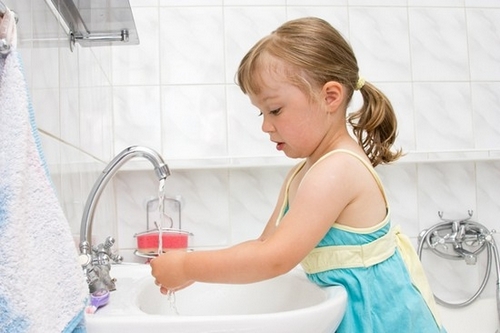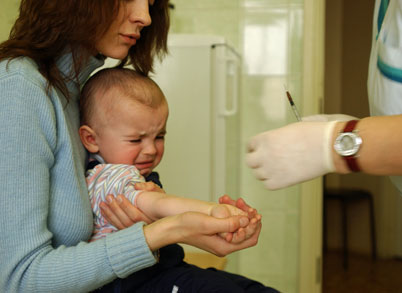The development of behavioral disorders is determined by the implementation of biological inclinations and environmental influences.
Research confirms that the leading role belongs to education, and heredity, psycho-physiological characteristics are risk factors.
Among the causes of behavioral disorders in children can be highlighted:
- Physiological processes. Imbalance of hormones, processes of arousal-inhibition, metabolic disorders contribute to the development of RP. Epilepsy, cerebral palsy is associated with an increased risk of disobedience, irritability.
- Psychological features. Emotional instability, low self-esteem, depressed mood, distorted perception of causal relationships, manifested by a tendency to blame events of other people for their own failures, contribute to the formation of RP.
- Family relationships. Behavioral syndromes in a child are formed with pathological parenting styles, frequent conflicts between parents. These reasons are most relevant for families where one or both parents suffer from mental illness, lead an immoral lifestyle, are involved in criminal activities, have pathological dependencies (narcotic, alcoholic). Intra-family relations are characterized by hostility, coldness, severe discipline or its complete absence, lack of love, participation.
- Social interactions. The prevalence of behavioral disorders is higher in kindergartens, schools with poor organization of the educational process, low moral principles of teachers, high turnover of staff, hostile relations between classmates (groupmates). Wider influence of society – relations in the territory of residence. In areas with national, ethnic, political fragmentation, the probability of behavioral deviations is high.
Physiological prerequisites for the formation of behavioral disorders in children are changes in the activity of neurotransmitters, an excess of testosterone, and metabolic changes. As a result, the focus of the nervous transmission is disturbed, an imbalance of the processes of inhibition and arousal develops. The child is long excited after frustration or is unable to activate volitional functions (directed attention, memorization, thinking).
With the right upbringing, benevolent environment, the physiological features are leveled. Frequent conflicts, lack of close relationships of trust, stresses become triggers for the implementation of biological features and the development of RP.
Classification
In the International Classification of Diseases 10 (ICD-10), behavioral disorders are highlighted in a separate section.
It includes:
- RP, limited by family. Characterized by dissocial, aggressive behavior, implemented within the home, the relationship with his mother, father, household. In the yard, kindergarten, school deviations are extremely rare or absent.
- Unsocialized conduct disorder. It manifests itself by aggressive actions, actions against other children (classmates, classmates).
- Socialized conduct disorder. Aggressive, asocial acts are committed as part of a group. There are no difficulties in intragroup adaptation. Includes group offenses, absenteeism, theft along with other children.
- Challenging opposition disorder. Characteristic of young children, manifested pronounced disobedience, the desire to break off relationships. Aggressive, dissocial acts, offense absent.
Symptoms of behavior disorders in children
Behavioral disorders have three main manifestations: unwillingness to obey adults, aggressiveness, antisocial orientation – an activity that violates the rights of others, causes harm to property, the individual. It is important to bear in mind that these manifestations are possible as a variant of the norm, disobedience is determined in most children, peculiar to crisis stages of development. The disorder is indicated by sustained (from six months) and excessive manifestation of symptoms.
Children with behavioral disorders often argue with adults, are angry, do not control emotions, tend to transfer guilt to another person, are touchy, do not obey the rules and requirements, purposefully annoy others, take revenge. Often there is a desire to destroy, damage to other people’s things. Possible threats, intimidation of peers, adults. Adolescents with RP provoke fights, fights with the use of weapons, penetrate into other cars, apartments, arrange arson, show cruelty towards people, animals, wander, skip school.
Clinical symptoms include depressed, dysphoric mood, hyperactivity, manifested by decreased attention, anxiety, impulsivity. Sometimes depressions develop, suicide attempts are made, self-harm is inflicted. Destructive behavior adversely affects academic performance, cognitive interest falls. The popularity of the child in the group is low, there are no regular friends. Because of the problems of making the rules, he does not participate in games, sporting events. Social maladjustment reinforces the behavior disorder.
Complications of behavioral disorders develop in adults. Young men who do not receive treatment show aggression, are prone to violence, antisocial lifestyle, often have alcohol, drug addiction, are involved in criminal groups or commit offenses on their own. In girls, aggressiveness, antisociality are replaced by emotional and personality disorders: neurosis, psychopathy. In both cases, socialization is violated: there is no education, a profession, there are difficulties with finding employment, and the preservation of marital relations.

Diagnosis of behavioral disorders in children
Diagnosis of behavioral disorders in children involved in a child psychiatrist. The study is based on a clinical method. For objectification of data, psychodiagnostics is additionally carried out, examinations of narrow specialists (neurologist, ophthalmologist), characteristics of educators, teachers, and law enforcement officials are collected.
Comprehensive examination of the child includes the following steps:
- Clinical conversation. The psychiatrist ascertains the severity, frequency and duration of aggressive, antisocial actions. Clarifies their character, focus, motivation. Talks with the parent about the emotional state of the child: the predominance of sadness, depression, euphoria, dysphoria. Asks about school performance, the features of socialization.
- Observation In parallel with the conversation, the doctor observes the child’s behavior, the peculiarities of the relationship between him and the parent. It takes into account the reaction to praise, condemnation, assesses how relevant the behavior is adequate to the situation. The specialist draws attention to the sensitivity of the parent to the mood of the child, the tendency to exaggerate the existing symptoms, the emotional mood of the participants in the conversation. Anamnesis collection, observation of intrafamily relationships allows us to determine the share of biological and social factors in the formation of the disorder.
- Psychodiagnostics. Projective methods, questionnaires are used additionally. They make it possible to identify the state of maladaptation, emotional and personal characteristics, such as aggressiveness, hostility, a tendency to impulsive actions, depression, anger.
Differential diagnosis of behavioral disorders involves their distinction with adaptation disorder, hyperactivity syndrome, subcultural abnormalities, autism spectrum disorders, and a variant of the norm. To do this, the survey takes into account the presence of recent stress, the intention of deviating actions, adherence to subcultural groups, the presence of autism, the development of cognitive functions.
Treatment of behavioral disorders in children
The treatment is carried out by methods of child psychotherapy. When expressed, not allowing to establish contact behavior violations medications are used.
An integrated approach to the elimination of RP implies:
- Behavioral methods. Based on the theory of learning, the principles of conditioning. Technicians are aimed at eliminating unwanted behaviors, developing useful skills. A structured, directive approach is used: the behavior is analyzed, the stages of correction are determined, new behavioral programs are trained. Child compliance with the requirements of the psychotherapist is reinforced.
- Group psychological training. Used after behavioral therapy. Called to promote the socialization of the child. Conducted in the form of a game, aimed at practicing the skills of interpersonal interaction, problem solving.
- Drug treatment. Preference is given to sedatives of plant origin. Concomitant emotional disorders, somatovegetative disorders are corrected by benzodiazepine tranquilizers with a vegetative stabilizing effect. Neuroleptics are individually prescribed (small dosages).
Treatment of the child should be supplemented by family counseling, social rehabilitation measures. Work with parents is aimed at improving the family microclimate, establishing cooperative relations with a clear indication of the boundaries of what is permitted. In the form of training, training is given to the correct style of upbringing, which presupposes a focus on the desired behavior of the child, enhancing the skills of self-government, coping in conflict situations.
The prognosis of behavioral disorders in children is favorable with systematic psychotherapeutic care. It should be understood that the treatment process is unlimited in time, takes several years, requires periodic medical observation.
Most often, a positive outcome is observed in the presence of deviant behavior in one characteristic, for example, aggressiveness, while maintaining normal socialization and academic performance. The prognosis is unfavorable for early onset of the disorder, a wide range of symptoms, and an unfavorable family environment.
Preventive measures – a favorable family environment, respectful, friendly attitude towards the child, the creation of comfortable material and living conditions. It is necessary to diagnose and treat neurological, endocrine diseases in a timely manner, to maintain physical health by organizing regular activities (sections, walks), nutrition
Behavioral disorders in children are syndromes characterized by a sustained inability to plan and control behavior, to build it in accordance with social norms and rules. It is manifested by noncommunity, aggressiveness, disobedience, lack of discipline, pugnacity, cruelty, heavy damage to property, theft, deceit, escapes from home.
The diagnosis is made by a clinical method, the data are supplemented by the results of psychodiagnostics. Treatment consists of sessions of behavioral, group, family psychotherapy, medication.
The term “behavioral disorder” (RP) is used to refer to repetitive, persistent for more than 6 months behavioral patterns that are inappropriate to social norms. RP is the most common diagnosis of child psychiatry. Epidemiology among children is about 5%.
There is a gender dependence – boys are more susceptible to behavioral disorders. In children, the ratio is 4: 1, in adolescents – 2.5: 1. Reducing the difference as they grow older is due to the late debut in girls – 12-13 years. In boys, the peak incidence is 8-9 years.



